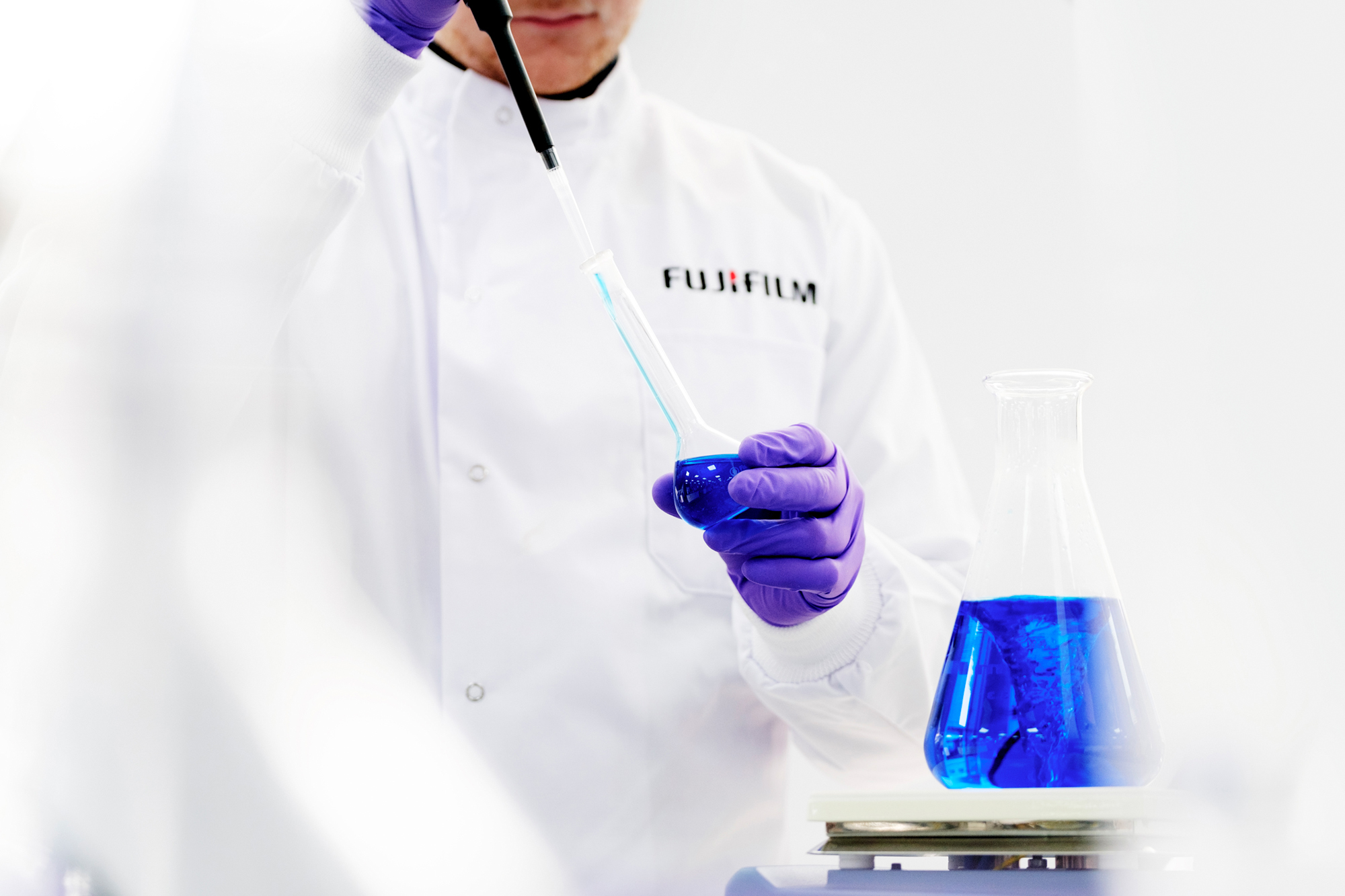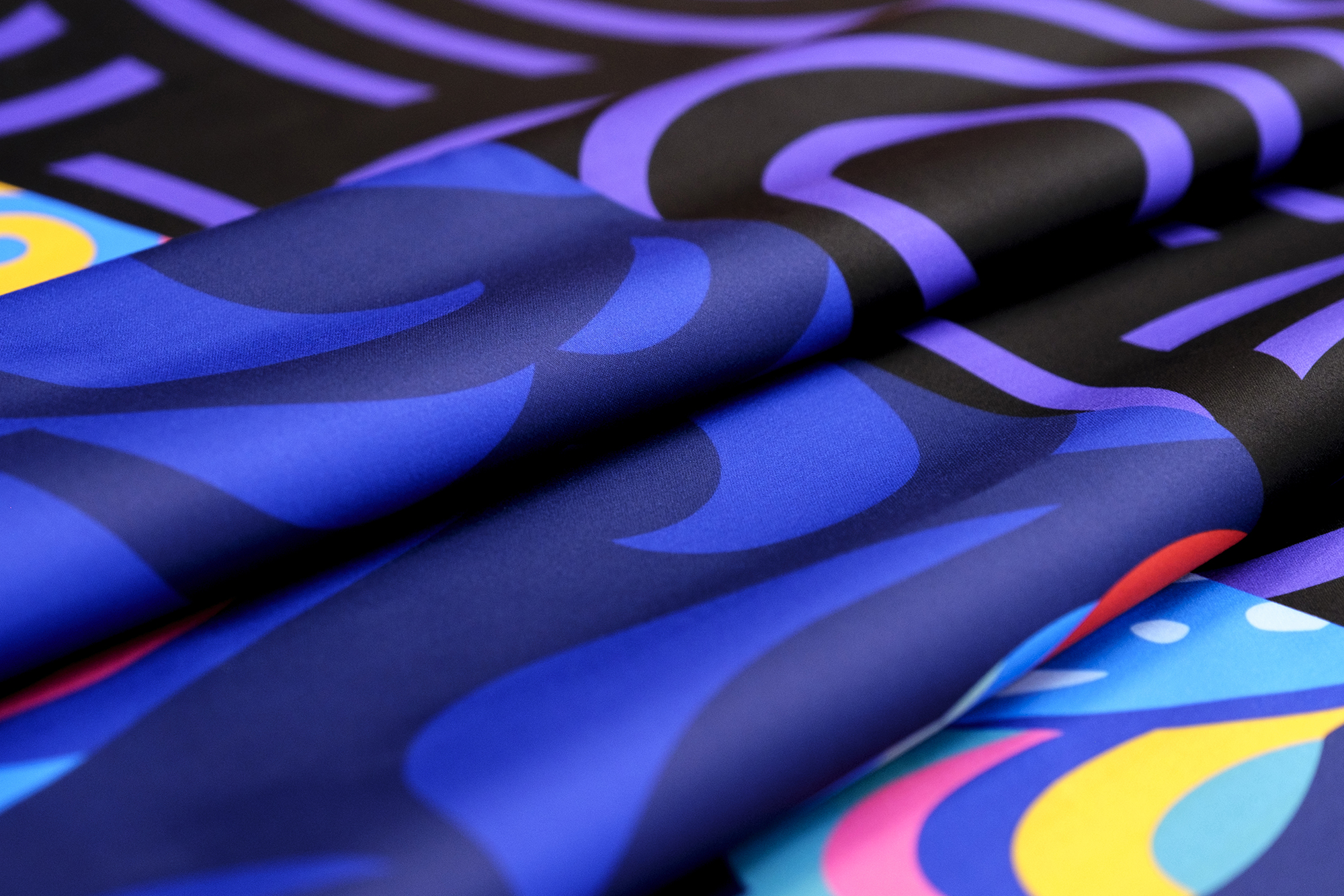
Sponsored by Fujifilm
The future of digital textile printing rests in sustainable solutions. Among the options available, pigment inkjet ink technology has emerged as a promising alternative to dye-based inks. Fujifilm's RxD® dispersions, known for their stability and high purity, offer the flexibility to overcome some of the specific challenges of formulating inkjet pigment inks for textile applications.
Digital printing technologies are playing a crucial role in driving innovation and sustainability for the production of home textiles, fashion and direct-to-garment printing. Digital printing is well-established in textiles, but the drive from big brands to offer seasonal variation, e-commerce and supply chain efficiency will continue to increase the digitalisation of the whole supply chain. As a mass consumer product, textile production is under scrutiny to reduce its environmental impact which has now become a prominent global concern.
Fortunately, pigment ink technology offers a more sustainable solution for a wide range of textile applications, reducing water and energy consumption throughout the manufacturing and printing process.
Recognising the significance of pigment inkjet for the textile industry, Fujifilm has dedicated efforts to the development of technologies to advance pigment inkjet ink performance.
Challenges in pigment ink formulation
The move from ink development with dye-based to pigment technology can bring a series of challenges. Reactive dye-based inks often produce more vibrant prints due to their ability to penetrate the fibres, resulting in higher colour concentration. Also, pigment ink prints may not be as soft because the ink film sits on the fabric surface rather than penetrating and colouring the fibres themselves.
In the formulation of inkjet inks, every component plays a crucial role in determining the ink's performance and functionality. Among these components, the pigment dispersion, co-solvents, binders and additives all play vital roles. However, the stability and quality of the pigment dispersion serves as the fundamental building block for a successful ink formulation.
RxD® inkjet pigment dispersions
Fujifilm’s RxD pigment dispersions enable the formulation of high-performance aqueous inks for a wide range of applications, including textiles. They are highly suitable for printhead architectures such as MEMS, with higher resolutions and small drop sizes.
What sets RxD dispersions apart is the proprietary precision stabilisation process, which effectively locks the pigment particles within a robust cage of cross-linked polymer. This cross-linking reaction is independent of the pigment and prevents the polymer detaching when exposed to solvents.
The exceptional stability of RxD dispersions allows for a wide range of ink formulation components, including stronger co-solvents and surfactants to achieve high image quality and ink functionality. Furthermore, the high pigment concentration provides flexibility in achieving optimal formulations, while compatibility with soluble and emulsive binders and latexes ensures endurance.
Optimising colour density
To achieve a high colour density print, it is necessary to use a high pigment strength dispersion in the ink formulation. The RxD stabilisation process enables high pigment strength dispersions to be created without compromising stability. Additionally, RxD dispersions are available in a range of colours to extend the gamut of the ink set in specific regions of a colour space.
Softness and wash- and crock-fastness are crucial factors in textile printing. The ink and binder type and the use of pre- and post-print treatments will influence the softness of the printed textile. As the binder and pigment sit on the surface, wash- and crock-fastness are dependent on the strength of the bond between the fabric, binder and ink film. With broad chemical compatibility, RxD dispersions can be used with a wide range of binders, so the ink formulator has more options in selecting the right binder for the best softness and fastness.
Balancing jetting reliability and drying speed
In high-speed single-pass inkjet systems, a longer drying time must be achieved without compromising jetting reliability, particularly open time. RxD dispersions offer wide co-solvent compatibility, allowing formulators to achieve optimal harmony between reliable jetting and drying. The ultra-high purity of RxD dispersions enables the creation of inks for the most demanding inkjet systems, minimising the risk of nozzle blockages or print head damage.
Availability
RxD dispersions are suitable for textile inks formulated to meet GOTS and Oeko-Tex® standards. The RxD range currently includes CMYK colours plus OGV and red pigments for formulating extended colour gamut ink sets.
RxD pigment dispersions are available to ink formulators and manufacturers globally, supplied from Fujifilm's production facilities in Europe and the US. Precision manufacturing processes and quality control systems ensure RxD dispersions consistently meet their specification, critical for reliable ink production.
To explore the possibilities of RxD dispersions for pigment inkjet ink formulations, reach out to Fujifilm and request a trial sample.
Learn more about Fujifilm’s RxD® aqueous inkjet pigment dispersions.
To trial RxD pigment dispersions, request a sample at www.fujifilmink.com.
Have your say. Tweet and follow us @WTiNcomment







